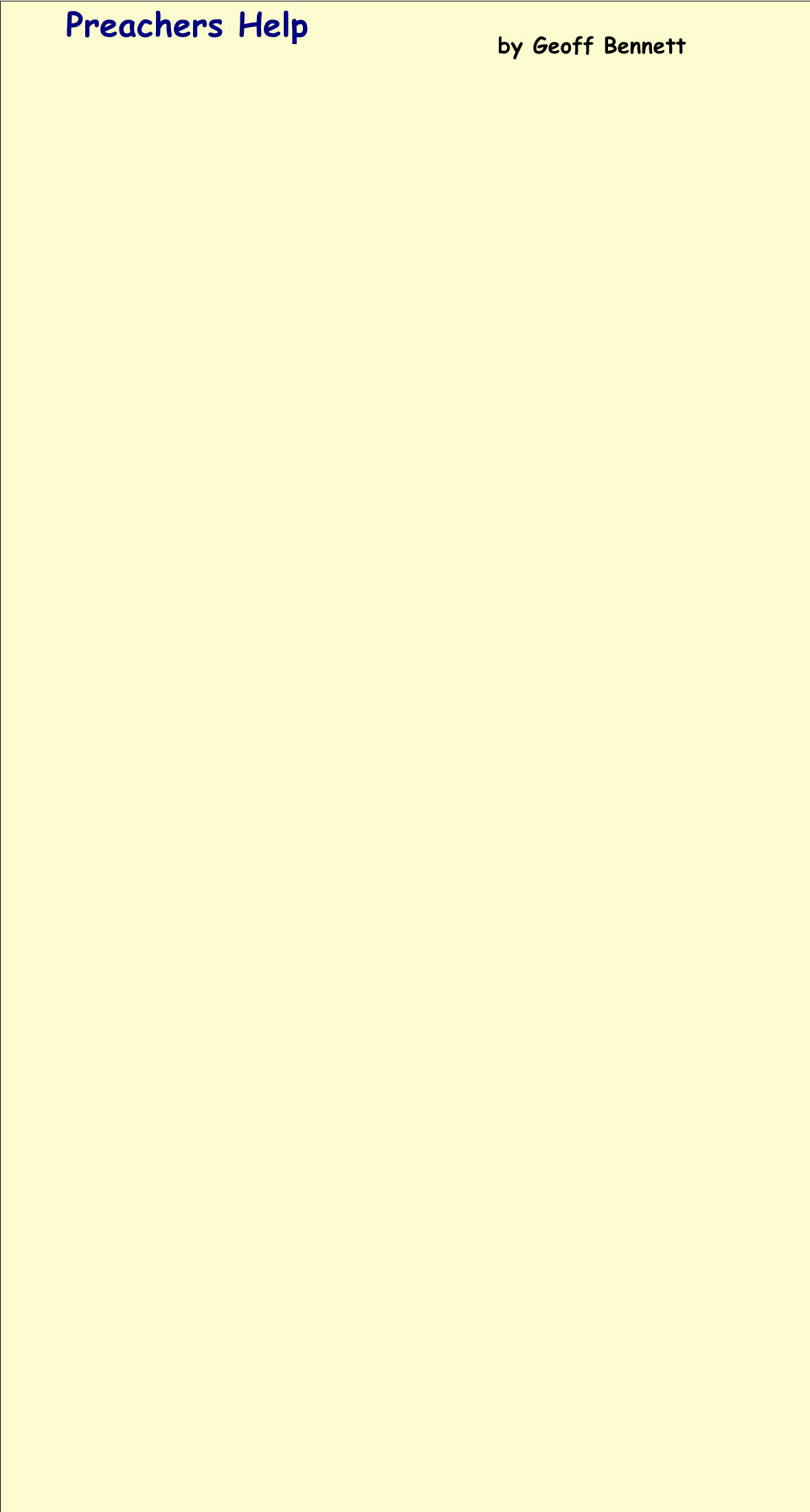
Welcome to my site for preachers

No greater moral change ever passed over a nation than that which passed over England during the years which parted the middle of the reign of Queen Elizabeth 1st from the meeting of the long Parliament. England became the people of the book and that book was the English Bible.
Its literary effects were great -
But we are racing ahead. We heard about William Tyndale’s prayer “Lord, open the king of England’s eyes.” The year Tyndale was burnt at the stake in1536 the Lord Chancellor -
Before we move on I would like to mention one other man who was greatly used by God in Bible translation. His name was Miles Coverdale and he lived from 1488 to 1568. He continued where Tyndale left off by completing the Old Testament. In 1539 he produced the Great Bible.
If you are familiar with the Church of England Prayer Book -
I particularly like the 23rd Psalm. The first verse generally reads “The Lord is my Shepherd I shall not want,” but Coverdale translated “The Lord is my Shepherd therefore shall I lack nothing.” Somehow that speaks deeper into the meaning.
There followed quite a number of Bibles. One was known as the Treacle Bible because in Jeremiah 8:22 we have “is there no balm in Gilead?” but this old Bible has “is there no treacle in Gilead?”
King Henry eventually died and his son Edward 6th was crowned at the age of nine.
He was the son of Henry’s third wife Jane Seymour. At his coronation he saw three swords and asked where was the fourth sword -
And interesting little aside -
Mary’s half sister Elizabeth was the daughter of Ann Boleyn. Elizabeth learnt the evangelical faith from her mother and as I said as I opened the programme -
Have you heard of the Buggie Bible? In Psalm 91:5 we read “You will not fear the terror by the night.” But this Bible had “Thou shalt not need to be afrayed for any buggies by night.” A Buggie is a body hobgoblin. Some strange superstitions were around at that time.
In 1560 came the Geneva Bible -
It was known as the Breeches Bible for in Genesis 3:7 we have “They sewed fig leaves together and made themselves breeches.”
As the century turned Good Queen Bess died in 1603. She had no children so the line passed to James 6th of Scotland. His line was through King Henry 8th sister Margaret who married James 4th of Scotland. They had a son James 5th who had Mary Queen of Scots. She had three husbands but James came from her second husband Henry Darnley who was born at Temple Newsam house in Leeds.
As James 6th took up the English throne he became James 1st and the Stuart line began here.
At that time there were three Bibles in circulation. The great Bible of 1539, the Geneva Bible of 1560, and the Bishops’ Bible (never popular) of 1568.
The English language was changing and the people were ready for a new translation of the Bible, so in 1604 the Puritans requested of the King permission for a new translation. 54 translators -
Whilst we call this the Authorised Version what is little known is that King James never signed the document giving the authorisation. But who cared? A Bible came that was to be the only Bible in the English speaking world for the next 300 years. It was rather slow to be accepted over 50 years but eventually it was loved.
It’s beautiful and stately language so endeared itself to the English speaking peoples that no one bothered to have another Bible for a long long time.
In 1739 a Bible was printed by Robert Barker that really got him into trouble. The poor printer had omitted the word ‘Not’ from the 7th commandment so it read “Thou shalt commit adultery!” Then John Baskett, printer produced a Bible which had the word Vinegar instead of Vineyard in Luke 22. It became known as a Baskett full of errors!
So there we are -
The three oldest are the Alexandrian thought to date from the 2nd/3rd century that was found at Alexandria in Egypt. This manuscript is not complete. Then there is the Vaticanus as the name suggests this is in the Vatican. This also is not complete there are gaps in the New Testament.
Then there is an interesting story of Constantine Tischendorf. (1815-
He was determined to produce a new Greek text. He worked in the Vatican for 14 days -
HOW THE BIBLE CAME TO US part 4
| Powerpoint 2 |
| PowerPoint 3 |